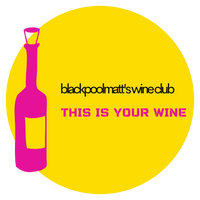blaufränkisch - not just austria
Blaufränkisch is one of Austria's most important black grapes. Its historic reputation can be seen in its name: Fränkisch is a traditional term for a high-quality grape, in contrast to inferior varieties which were called Heunisch. It produces spicy, meaty wines not dissimilar to Syrah, though not as tannic, and is more suited to a cooler climate.
Its origins lie somewhere between the modern Austrian and Hungarian borders. In Hungary, it's called Kékfrankos (a literal translation of Blaufränkisch) where the wines are particularly bloody. There are around 1,800ha planted in Germany, where the grape is called Lemberger, named after the southern Austrian town of Limberg. That's what it's also called in Washington State in the US, where in the early days of Washington's development it was considered to have great potential. It never really took off, as no one knew what Blaufränkisch (let alone Lemberger) was in the 1970s. As noted below, New York State is another youngish US region that has great potential for Blaufränkisch due to its suitability to a cool climate.
Such is the burgeoning popularity of Blaufränkisch that blackpoolmatt's wine club has three wines from three different countries. I admit this is more by chance than planning ... it's just that I have tasted some great Blaufränkisch recently.

austria: markus altenburger "vom Kalk" blaufränkisch burgenland 2017 ($22)
Although Austria is known for its fine white wine from Grüner Veltliner and Riesling, there is some fabulous red wine too at various price points. The most planted grape is Zweigelt, a crossing of Austria's two most important black grapes, St-Laurent and Blaufränkisch. Much of Austria's red wine is found in Burgenland, which is south of Vienna around the large, shallow lake Neusiedlersee, and reaches the border with Hungary.
Burgenland, just west of Neusiedlersee, is where Markus Altenburger is located, a young winemaker with a rising profile and reputation. He took over his family's property in 2006, and has affected a radical transformation. Then, 70% of the estate was Chardonnay, now it's 70% Blaufränkisch. Markus wants to work with 800 years of local winemaking tradition while remaining contemporary and forward thinking. Certified organic and moving towards biodynamic, he aims to make wines which are as close to nature as possible rather than being, in his words, "well-behaved."
 there's a smoky, bacon-like character, not dissimilar to Syrah, with aromas of red and blue fruits and an intense, firm, tannic structure
there's a smoky, bacon-like character, not dissimilar to Syrah, with aromas of red and blue fruits and an intense, firm, tannic structure
 Gröstl (fried potatoes and meat)
Gröstl (fried potatoes and meat)
germany: karl haidle "bunter mergel" lemberger württemberg 2017 ($30)
Germany is strongly associated with white wine, especially Riesling, but over a third of wine made in the country is red. This is in part due to domestic demand, as German consumers want to have locally made red wine. Climate change helps too, with warmer conditions. But Germany has a long tradition of red wine, with plantings of Pinot Noir (or Spätburgunder) going back hundreds of years.
It's pretty unusual to find Lemberger outside of Germany, which is why I was so excited to try this wine from Württemburg, a region where over 90% of German Lemberger is grown. The winery was founded in 1949 by retired world-class gymnast Karl Haidle; now, it's third generation graffiti artist and hip-hop aficionado Moritz who makes the wines. As this suggests, Moritz has an irreverent approach to winemaking, with minimal intervention to ensure that the wines, which are made from Riesling, Lemberger, and Spätburgunder, truly express where they are from.
 such an attractive, approachable wine: light-bodied but spicy and meaty with aromas of red fruits and flowers
such an attractive, approachable wine: light-bodied but spicy and meaty with aromas of red fruits and flowers
 Wu-Tang Clan, A Better Tomorrow
Wu-Tang Clan, A Better Tomorrow
new york: element blaufränkisch finger lakes 2015 ($45)
As mentioned above, when the Washington wine scene slowly got going in the 1970s there was a focus on Blaufränkisch as representing the region's future. Something similar is perhaps happening in New York. Although grape growing goes back to the 1600s, it's only since the 1970s that there has been a focus on quality wine; even now, a quarter of grapes planted are hybrids. New York is a large state, with a diverse growing culture, from Atlantic Long Island to inland, continental Finger Lakes.
Producers are still experimenting with different varieties, but I feel Blaufränkisch has great potential as, similarly to Germany, it's well suited to New York's cool climate. There's Blaufränkisch planted on Long Island, as well as Finger Lakes. These are a series of thin, long, and, most importantly, deep lakes which provide a warming effect for the vines which are planted on the banks of the lakes.
The Element winery is run by Christopher Bates, a Master Sommelier and native New Yorker who has successfully turned his hand to winemaking. His goal is to make wines as expressive of Finger Lakes as possible, with minimal intervention in the vineyard or the winery. This Blaufränkisch is evidence of that: light, nuanced, and delicately spicy, a perfect representation of the grape grown in a cool climate.
And, by the way, blackpoolmatt's wine club is the only retailer carrying the wine in California ...
 quite meaty and serious, but light-bodied with gentle red fruit aromas and a light spice
quite meaty and serious, but light-bodied with gentle red fruit aromas and a light spice
 bratwurst
bratwurst
